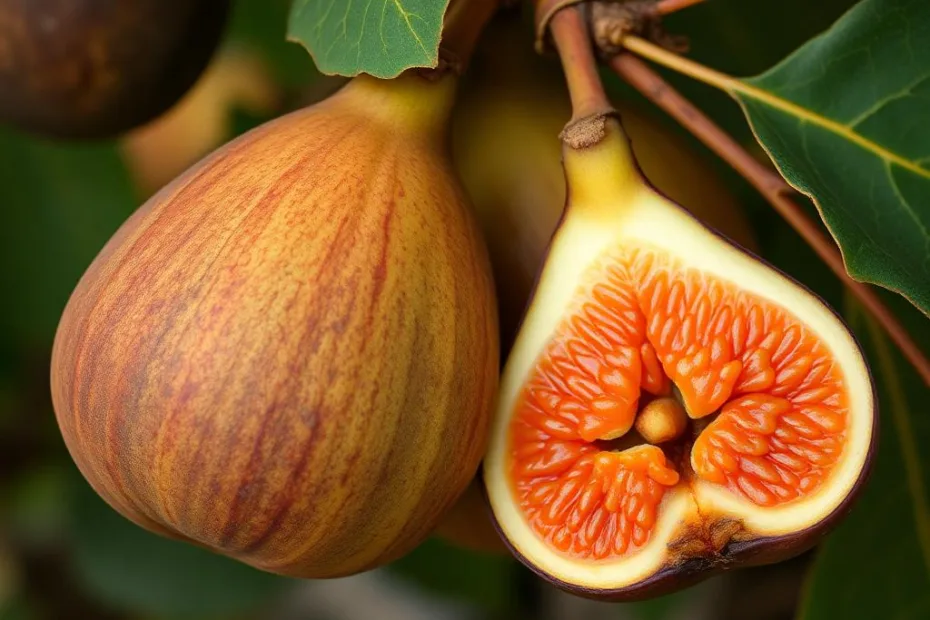Fig in Spanish: Higo
The word “fig” in Spanish is translated as higo (pronounced EE-go). Figs are one of the oldest cultivated fruits, cherished for their sweetness, unique texture, and nutritional benefits. In Spanish-speaking cultures, figs are a significant part of traditional recipes, symbolism, and daily diets.
In this article, we’ll explore the meaning of higo, its cultural importance, culinary uses, health benefits, and interesting facts about this remarkable fruit.
1. Meaning of Higo
The word higo refers to the fig fruit, which grows on the fig tree (Ficus carica). Figs are known for their soft, chewy texture, sweet flavor, and numerous tiny seeds inside.
Example Sentences
- Me encanta comer higos frescos en verano.
(I love eating fresh figs in summer.) - Los higos secos son un excelente snack saludable.
(Dried figs are an excellent healthy snack.)
2. Types of Figs (Higos)
There are several varieties of figs, all referred to as higos in Spanish.
- Higo Blanco: Light-colored figs with a delicate, sweet flavor.
- Higo Negro: Dark purple or black figs with a rich, robust taste.
- Higo Turco: Turkish figs, known for their size and sweetness, often dried for export.
- Higo de Almendra: Smaller figs with a nutty flavor, popular in Mediterranean cuisines.
Example Sentence
Los higos son ricos en fibra y perfectos para mantener una buena digestión.
(Figs are rich in fiber and perfect for maintaining good digestion.)
Los higos de temporada son mucho más dulces y jugosos.
(Seasonal figs are much sweeter and juicier.)
7. Fun Facts About Figs (Higos)
- One of the Oldest Fruits: Figs have been cultivated for over 5,000 years, making them one of the oldest domesticated fruits.
- Pollination by Wasps: Figs are pollinated by tiny wasps in a unique symbiotic relationship.
- Sacred Fruit: Figs were considered sacred in many ancient cultures, including those of Egypt and Greece.
- Dried Figs: A popular way to preserve figs, dried figs are a nutritious and portable snack.
- Figs in Art: Figs have been depicted in art and literature for centuries, symbolizing prosperity and sensuality.
8. Idiomatic Expressions with Figs (Higos)
Figs are featured in Spanish idioms and sayings, showcasing their cultural importance:
- “Ser como higos a brevas”: Used to describe something that happens very rarely.
- Example: Solo lo veo como higos a brevas. (I only see him once in a blue moon.)
- “Estar más contento que un higo”: Means being extremely happy or content.
- Example: Después de la fiesta, estaba más contento que un higo. (After the party, he was as happy as a clam.)
9. Regional Uses and Recipes
Spain
- Higos con Queso Manchego: A classic pairing of figs with Manchego cheese.
- Pan de Higo: A dense fig cake made with dried figs, almonds, and spices.
Mexico
- Dulce de Higo: Figs cooked in syrup, often served as a dessert.
- Higos en Conserva: Preserved figs, enjoyed as a topping or snack.
Caribbean
- Compota de Higo: Fig compote, used as a spread or dessert topping.
10. Example Sentences About Figs (Higos)
- Los higos secos son perfectos para acompañar con nueces y queso.
(Dried figs are perfect to pair with nuts and cheese.) - En Andalucía, los higos frescos son un ingrediente popular en las ensaladas.
(In Andalusia, fresh figs are a popular ingredient in salads.) - El dulce de higo es uno de mis postres favoritos en Navidad.
(Fig syrup is one of my favorite desserts at Christmas.) - Las higueras crecen en climas cálidos y soleados.
(Fig trees grow in warm, sunny climates.) - Hicimos una mermelada de higo casera para el desayuno.
(We made homemade fig jam for breakfast.)
Figs, or higos, are more than just a fruit in Spanish-speaking cultures—they are a symbol of history, tradition, and culinary artistry. From fresh figs in salads to dried figs in desserts, they bring unique sweetness and richness to any dish.
Whether you’re enjoying a plate of higos con queso or spreading mermelada de higo on your toast, this versatile fruit offers a delightful experience that transcends borders and generations.
Fiddle Leaf Fig (Ficus lyrata)
The fiddle leaf fig is a popular indoor plant known for its large, glossy leaves that resemble the shape of a fiddle or violin. Native to the tropical rainforests of West Africa, it belongs to the Moraceae family and thrives in warm, humid conditions. Its dramatic foliage and ability to elevate interior spaces have made it a favorite among plant enthusiasts and home decorators.
Fiddle leaf figs are typically grown as houseplants, but in their natural habitat, they can reach heights of up to 15 meters (50 feet). Indoors, they usually grow to 4–6 feet, depending on care and environment. Their leaves are thick and leathery, with prominent veins that add texture and depth to their appearance.
Caring for a fiddle leaf fig requires attention to light and watering. They prefer bright, indirect sunlight and consistent watering, allowing the soil to dry slightly between waterings to prevent root rot. They thrive in temperatures between 65°F and 75°F (18°C to 24°C) and benefit from occasional misting to mimic their native humid environment.
With their striking visual appeal, fiddle leaf figs are often used as statement pieces in living rooms, offices, or lobbies. Despite being a bit finicky in their care requirements, they reward attention with lush growth and a bold, sculptural presence. These plants symbolize elegance, creativity, and a touch of nature indoors, making them a cherished addition to modern spaces.
Also read:
Additional Insights

Parallel Axis Theorem – Definition, Formula, Derivation & Applications

Axis of Symmetry: Definition, Equation, and Real-Life Applications

X and Y Axis: Definitions, Graphs and Examples
Coconut Spanish Translation

Cashew Spanish Translation
Axis Definition and Meaning

Walnut in Spanish Translation

Almond in Spanish – Translation and Meaning

